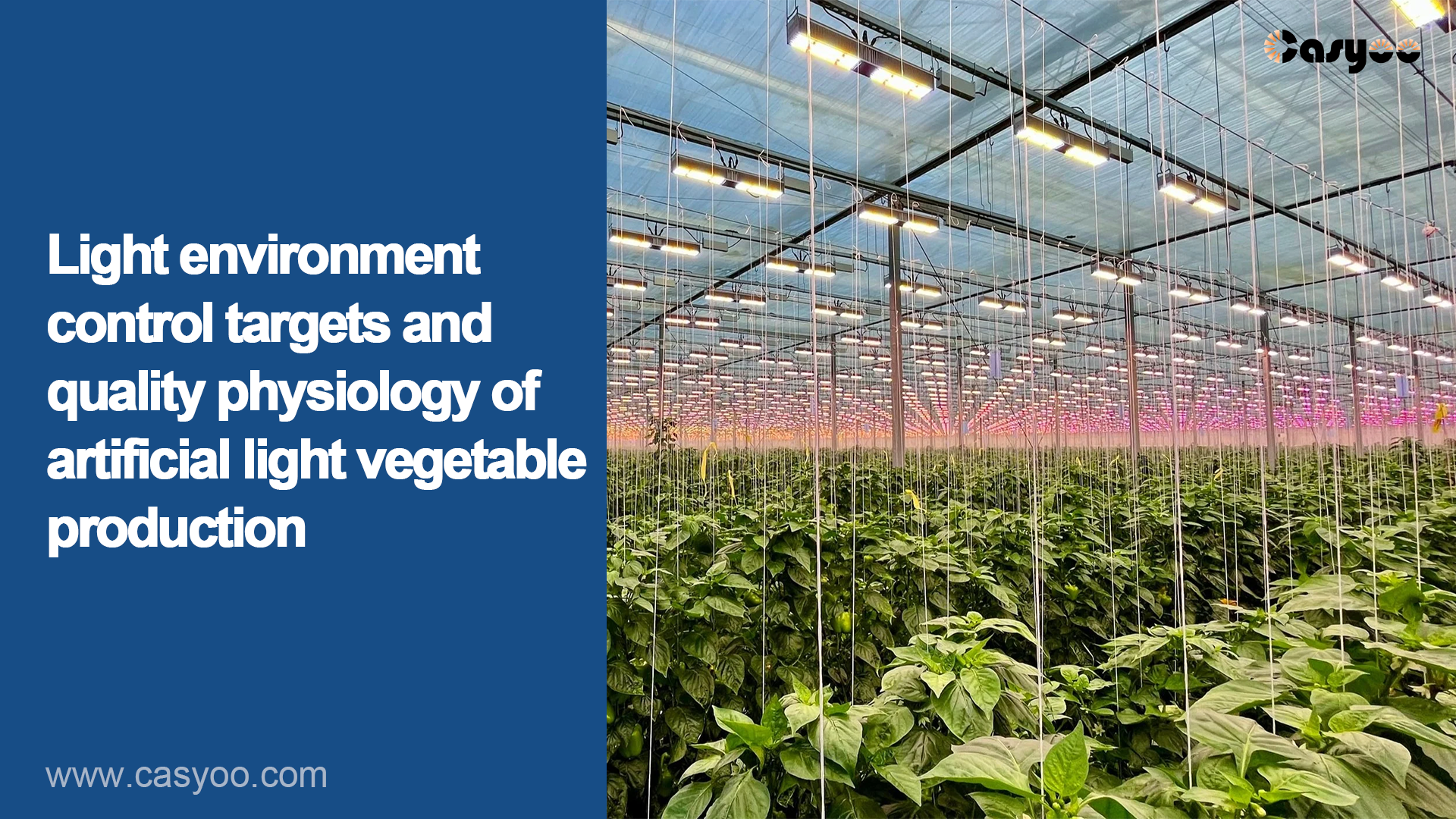
Quality and functional substance accumulation levels are one of the important indicators of concern in facility vegetable production. For vegetables, the main nutritional quality indicators include primary metabolites (sugar, protein, minerals, vitamins, cellulose, etc.) and secondary metabolites (anthocyanins, phenolics, flavonoids, lycopene, etc.). These indicators are controlled by light conditions. In other words, they are nutritional quality indicators that can be controlled by light conditions, which have prospects in the applications of LED lighting.
Hu et al.'s (2014) study showed that consuming 200g of fruits (equivalent to two apples) per day can reduce the risk of stroke by 32%; consuming 200g of vegetables per day can reduce the risk of stroke by 11%. The appearance quality and nutritional quality of vegetables are very important.
Zheng Xiaolei et al. (2011) studied the effects of different light qualities (white fluorescent light, red LED, blue LED, red/blue LED) on the growth and edge burning of loose leaf lettuce under plant factory conditions, providing a certain theoretical basis for the high-quality and efficient production of loose leaf lettuce in plant factories.
The results showed that red/blue LED can significantly increase the fresh weight, leaf number and leaf area of loose leaf lettuce, and reduce the nitrate content of loose leaf lettuce, but does not reduce the edge burn index; red LED can promote stem elongation, significantly reduces the burnt edge disease index and nitrate content, but is not conducive to dry matter, vitamin C accumulation and leaf area increase; blue LED inhibits the growth of loose leaf lettuce and increases nitrate content, but can significantly reduce burnt edge disease index. It showed that red LED is beneficial to the growth of loose leaf lettuce in the plant factory and reduces the occurrence of burnt edges.
The plants had longer internodes and thinner stems under red light. Under blue light, the internode is shorter and the stem is thicker, and the elongation and growth are inhibited to some extent (Jao and Fang, 2003).
Blue LED significantly inhibits the growth of loose leaf lettuce stems. Red light promotes stem elongation (Li and Kubota, 2009); while under blue LED, the stem length was 16% shorter than the control, indicating that blue light inhibited stem elongation. and the results were consistent with those of previous studies.
Blue light increased the activity of indoleacetic acid oxidase, decreased the level of auxin, and inhibited plant growth. Red and blue LED light can increase the vitamin C content of loose leaf lettuce compared with fluorescent light, and red LED can significantly reduce the vitamin C content of loose leaf lettuce. Chen Qiang et al. (2009) found the same result on tomatoes.
The effect of light quality on vitamin C content was related to the activity of its synthesis and decomposition enzyme activity. Galactolactone dehydrogenase (GalLDH) directly catalyzed the synthesis of vitamin C from galactolactone. Ascorbate oxidase and ascorbate peroxidase (AAP) are key enzymes in the oxidation of vitamin C in plants (An Huaming et al., 2005), and these three enzymes are sensitive to light. The mechanism of the different responses of the above three enzymes to different light properties needs to be further studied.
Vitamin C is an important nutrient component and an important index to evaluate the quality of loose leaf lettuce. Leafy vegetables are very easy to enrich nitrate, which is converted into nitrite during use, which is harmful to human health. Red LED can reduce the nitrate content of loose leaf lettuce, while blue LED can increase the nitrate content of loose leaf lettuce (Zheng Xiaolei et al., 2011; Deng Jiangming et al., 2000).
Blue LEDs increase nitrate content mainly because the process of absorbing nitrate nitrogen requires energy consumption, and blue light is likely to promote nitrate nitrogen absorption by stimulating ATP formation. The cogroups of nitrate reductase (NR) are flavin adenine dinucleotide and purine, and the chromophore of blue light receptor contains flavin and purine, so blue light is likely to directly stimulate NR, so that nitrate in loose leaf lettuce leaves can be reduced quickly, thus promoting the absorption and accumulation of nitrate.
The anthocyanin synthesis and accumulation of red leaf lettuce will decrease under the facility cultivation condition. Studies have shown that supplementing blue light and UV-B light at night can significantly improve anthocyanin synthesis. Shoji et al. (2010) studied the effect of increasing blue light intensity in red-blue composite light on anthocyanin synthesis. The accumulation of anthocyanins is the largest under blue light of 100umol/m2·s, the smallest under red light, and the red and blue composite light was in the middle. That is to say, the ratio of red to blue is very important in the synthesis of anthocyanins in red leaf lettuce.
 torr45838
torr45838
Discussions
Become a Hackaday.io Member
Create an account to leave a comment. Already have an account? Log In.